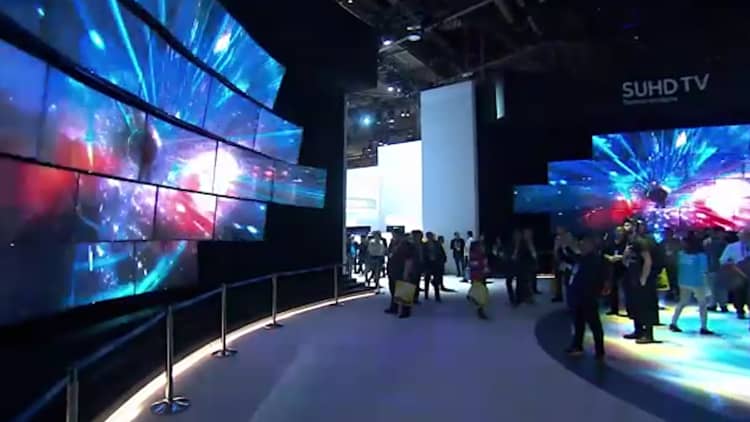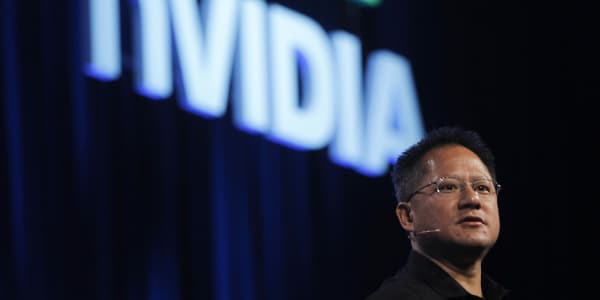
The Consumer Electronics Show (CES), an annual event that often sets the tone for the year in tech, hits Las Vegas the first week of 2017.
It's usually dominated by gadgets like phones, cameras and TVs, but those aren't expected to be this year's headliners, said Vivek Wadhwa, distinguished fellow at Carnegie Mellon University's college of engineering and a director of research at Duke University's Pratt School of Engineering.
Instead the event is more likely to be dominated by automakers showing off self-driving cars, even if the average consumer is more likely to see changes in the kitchen than the garage this year, Wadhwa said.
Here are three trends to watch.
1. Very smart cars
Toyota, Hyundai ... and BlackBerry?
Alongside phone-makers like Huawei and Samsung, car companies like Toyota, Hyundai and Nissan are expected to announce major news. Competition from the likes of Alphabet and Uber has made CES as crucial as the Frankfurt Motor Show for companies show their chops around artificial intelligence and autonomous driving.
BlackBerry, for instance, is expected to reveal more car technology, in a bet to revive the company's waning influence. The company recently pledged $75 million toward its efforts over the next few years.
Among the juiciest offerings of January's show could be a reveal from Faraday Future. The rumor mill has speculated that the Chinese-backed start-up may be unable to pull off its outlandish vision. The company plans to respond to those claims at CES.
Despite the unprecedented hype among techies, the car is just one example of a larger trend: Rather than adding to your arsenal of gadgets, technology companies are trying to improve and connect the ones you already buy, said Wadhwa, author of the upcoming book "The Driver in the Driverless Car: How Our Technology Choices Will Create the Future."
Cars aren't the cheapest, easiest gadget to swap out, Wadhwa said. But companies are betting eventually a "smart" car could be one of many connected devices.
"Cars are still two or three years away," Wadhwa said. "There's more focus on home appliances. The internet of things ... was big last year. Now we're going to see the integration, using the bots. Apple, Microsoft and Google are putting AI into everything. ... That's what 2017 will hold."
2. Internet of things meeting AI
Amazon, Google and Samsung
Amazon's Alexa and Google Home are examples of interfaces that connect disparate gadgets and services into a single interface. Alexa has a robust presence at CES this year, with sessions on using the Echo for games, the home and yes, cars.
This is an area where Samsung, wounded by last year's Galaxy Note 7 recall, could get back its mojo, Wadhwa said. Samsung is already the maker of "smart" devices like refrigerators, and it has recently waded deeper into this area with two acquisitions.
One is Harman, which develops for connected cars, and the other is Viv, an assistant by the makers of Apple's Siri. The way we now ask Siri for the temperature, we could soon be asking Viv or Alexa how much milk is left in the fridge, Wadhwa said.
Like Facebook's Mark Zuckerberg, Wadwha said he still sees the mobile phone as a central hub for these activities, as opposed to wearables like smart glasses or watches.
"The phone is going to be here for [a] long time," Wadwha said. "Augmented reality is when you're sitting down, for entertainment."
3. Tech hype hangover
VR, robots, drones, wearables and even 3-D printing
Still, the breakout trends of years past — virtual and augmented reality, drones and wearables — remain a big focus at CES.
A vice president at Intel and a senior advisor to the Federal Aviation Administration will speak about drones at the conference, while speakers from Mattel, Imax, HTC and Sony Pictures all plan to riff on virtual reality.
Despite plateauing sales among consumers, wearables and 3-D printing are also on the agenda this year, with a dossier of speakers ranging from Reebok to Fossil.
The sessions will come after eMarketer slashed its forecast for wearable-device adoption this year. MakerBot, a 3-D printing company, has suffered a slew of layoffs.
While these trends may have faded from the limelight, Mark Cavender, founder and managing director of the Chasm Institute, said these products could leverage strong adoption among businesses to bridge the gap between technology enthusiasts and more conservative consumers.
"Often I've seen with consumer products that they first cross the chasm with business," Cavender said. "If you think of when TVs went from CRT to flat screen, and when they went to high definition, the first people that bought them were wealthy technology enthusiasts. You also saw some business technology enthusiasts, to just learn about them. But the first visionaries were, for instance, sports bars in a city. All of the sudden sports bars, in the period of about a year, went to high-definition TVs."
A simple device, like a low-cost fitness tracker, might catch on more quickly, Cavender said. But consumers might need to see more from drones or VR before they make the leap.
Amazon drone delivery or surgeons training on VR might move the technologies beyond core groups like gamers this year, he said.
"The wearables that I think showed a lot of potential were B2B," Cavender said. "A glove that's got sensors to help Mercedes-Benz have better quality on the assembly line by noticing a mistake. Or building a set of clothing that miners can wear underground that monitor their environment."





